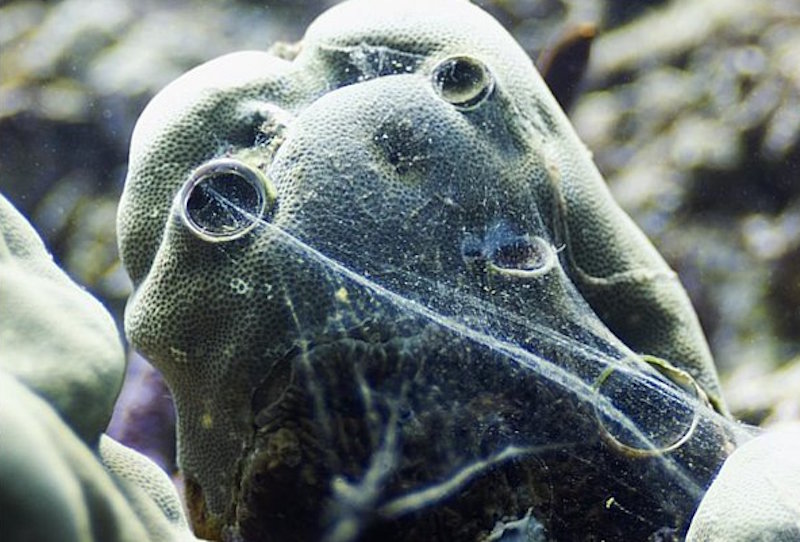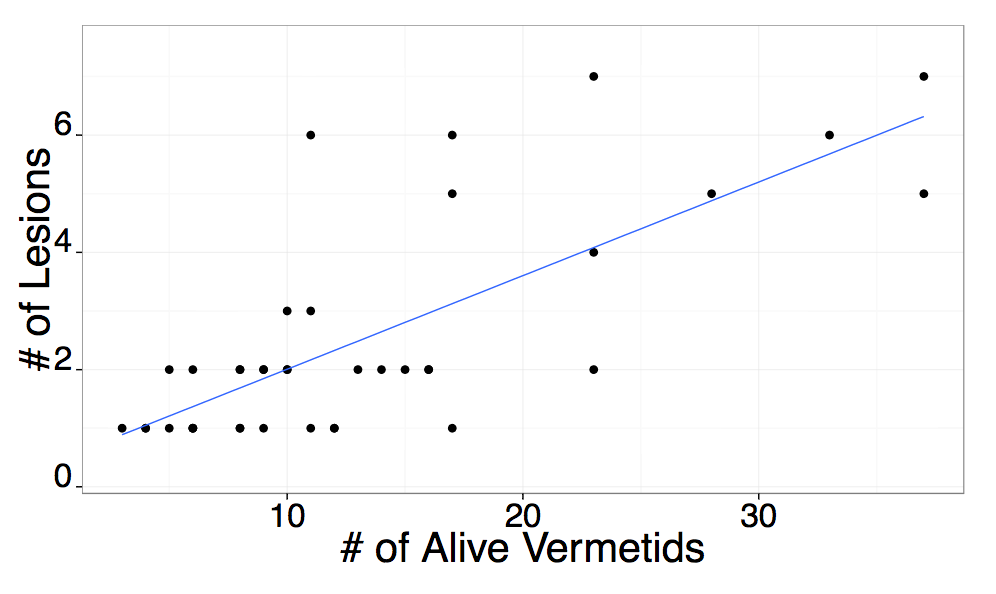We’ve hated vermetids for as long as we’ve been reefing, and now science has given us the last nail in the coffin for this unwanted aquarium critter. Although they look like tubeworms, vermetids are actual a kind of snail which grows its shell in place – either on rocks or inside coral skeletons.
Since they can’t move around, vermetid snails instead employ a unique by annoying form of filter feeding. Unlike beautiful Christmas Tree Worms which use their colorful gills to filter food from passing water, vermetids use a net made of sticky slime.
In a vacuum there’s no harm to vermetid snails’ unique life style but on the reef and the reef aquarium, this slime net is a big problem for their neighbors. Most alarming is how the slime net of vermetid snails irritates the corals they often grow in and around, causing polyps to remain retracted and instigating tissue loss.

This means that where vermetids are growing and abundant, corals die back and the reef looses its ability to grow. This is readily apparent in the home aquarium when one large vermetid or a cluster of small ones can easily smother coral frags with their unsightly slime nets. It has also been shown that these slime nets are a deterrent to algae grazing fish, preventing them from cleaning real estate on the reef, and encouraging algae growth in the home aquarium.
Instinctually we always knew these little slimeballs are bad for corals, but a new study has offered convincing proof that we should do everything we can to exclude them from our reef tanks. Described by coral reef ecologists as ‘Coral Antagonists’, a recent die-off of a large species of Vermetids in Moorea gave researchers a chance to see the effect of their absence on coral growth and health.
 Simply put, there was a direct positive (=bad) association between the number of vermetids in or near a coral, and the number of lesions that the coral showed. Corals with fewer or no vermetids in their vicinity were healthy and mostly devoid of any lesions or tissue recession.
Simply put, there was a direct positive (=bad) association between the number of vermetids in or near a coral, and the number of lesions that the coral showed. Corals with fewer or no vermetids in their vicinity were healthy and mostly devoid of any lesions or tissue recession.
So the moral of the story is that you should remove vermetids from the aquarium if you see them, remove them from corals and clams added to the aquarium, and generally go on the offense against this slimy pest. Unfortunately, in our high nutrient reef tanks certain species of vermetids can reproduce in aquariums, and the small offspring often lodge themselves in inaccessible places, inside the rock, the sump, and various pieces of reef aquarium gear.
The first line of defense is to mechanically remove them, spear them, or in some cases you might be able to simply super glue their trapdoor shut. We’ve also wondered about the potential to ‘train’ small Canthigaster sharpnose puffers to eat vermetid snails, but you also have to be mindful about what else they might prey upon like other molluscs and crustaceans.



